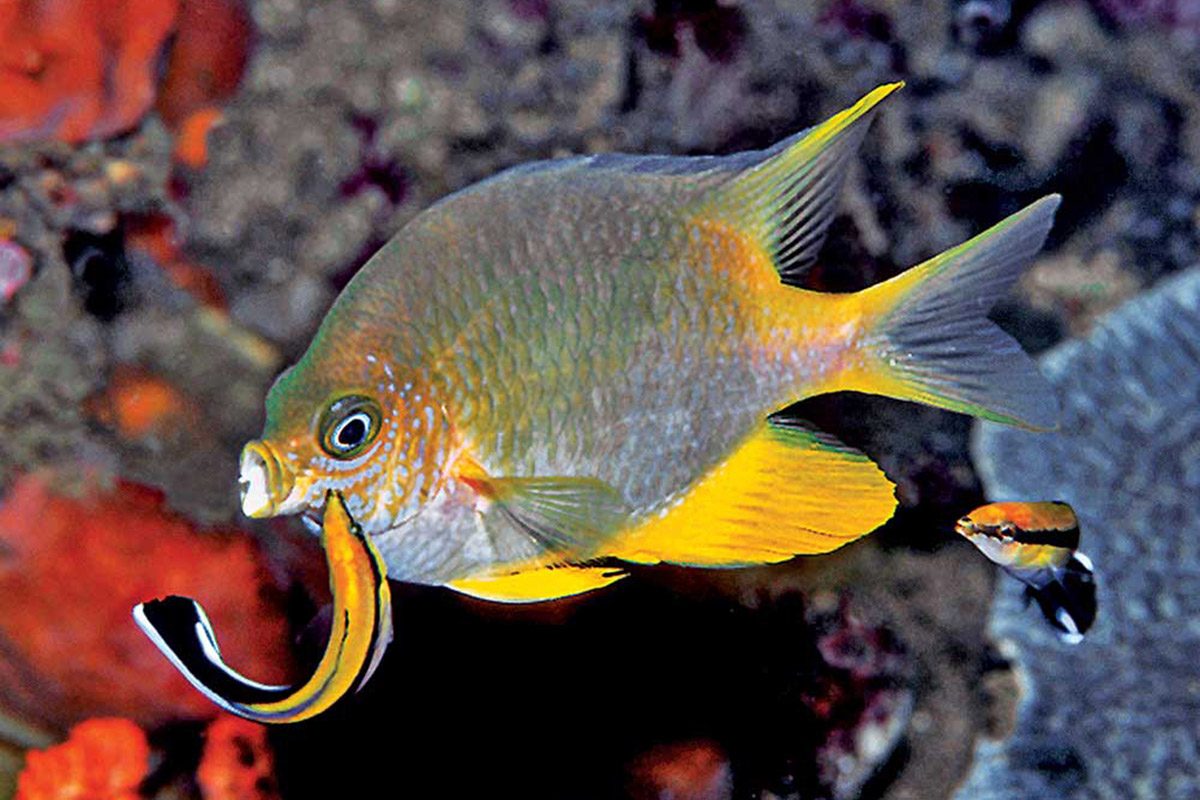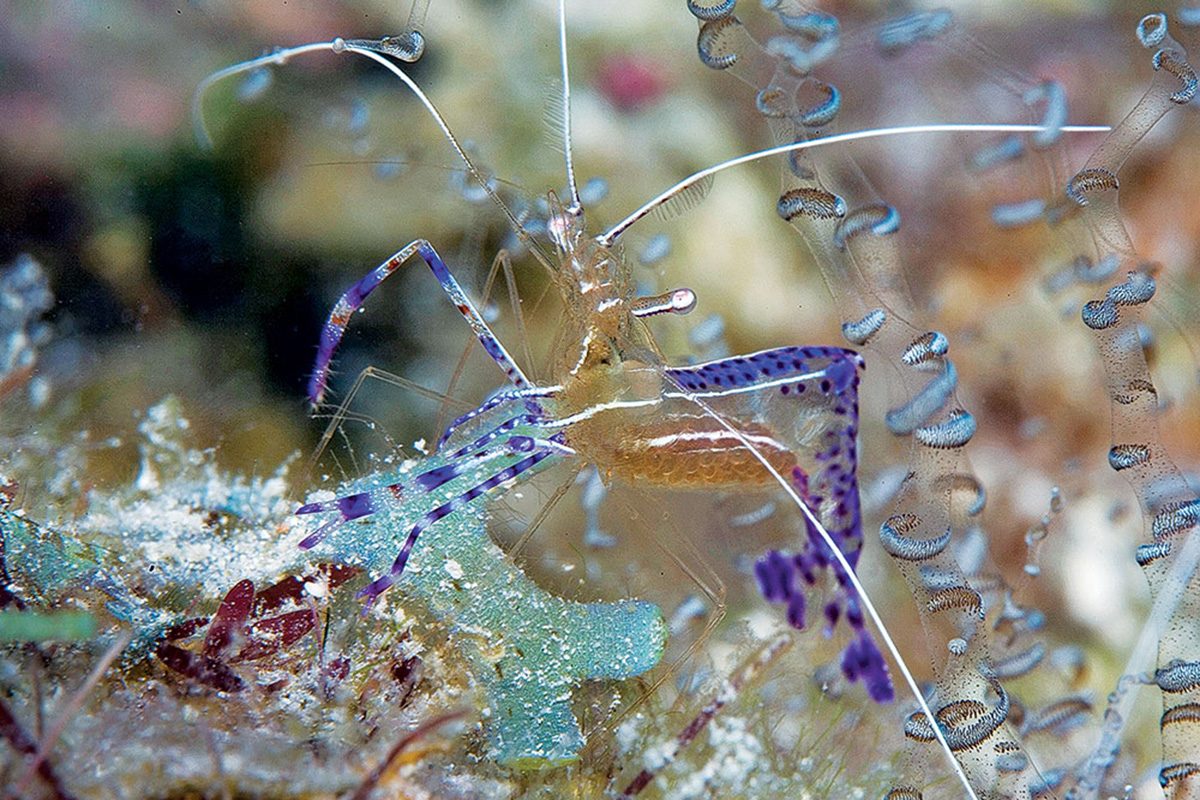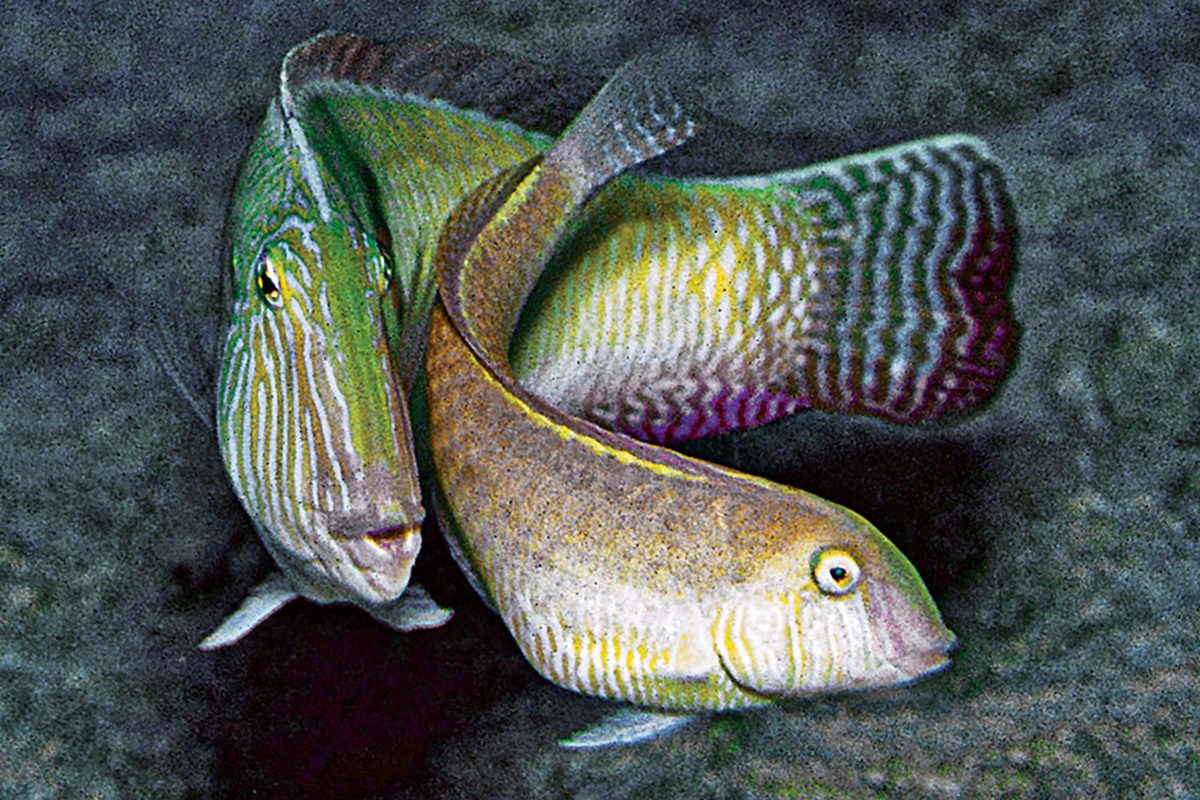Pest Control
“Cleaning” has long been touted as an example of symbiotic mutualism, where two species benefit from a close relationship. But this relationship, may not be so clear-cut as once thought.

“Cleaning” has long been touted as an example of symbiotic mutualism, where two species benefit from a close relationship. But this relationship, may not be so clear-cut as once thought.

Pederson shrimp perch on or near the tentacles of corkscrew anemones spiraling out from openings at the base of reef rocks and coral heads.

The rosy razorfish survives with a head as hard and as sharp as a cleaver that enables the fish to burrow beneath the sand when threatened.

An adaptation in male copepods enable them to quickly change from bright gold to near transparency — thwarting any possible predators. The gold flashes earned the name “jeweled water.”

Since the turn of the millennium, there has been a flurry of new pygmy seahorse discoveries. We now have seven named species across the Indo-Pacific.

Small sea creatures may be considered rare, but in actuality, they can be rather common occurrences if you know what you’re looking for. Using personal experiences of observance, you’re better able to identify creatures in their natural habitats.

Having previously photographed many of the Red Sea’s wide-ranging cosmopolitan species in the Pacific, we planned to concentrate our efforts on endemics (species confined to a single region by geographic isolation). Sergey V. Bogorodsky and John E. Randall report that the Red Sea is home to 1,120 coastal fish species. Of these, 165, or roughly 15 percent, live nowhere else and have been designated as endemics. Only the remote Hawaiian archipelago and Easter Island, isolated by distance from a regular flow of larval recruits, harbor a higher percentage of homegrown species.

With appendages directly on their heads and the ability to camouflage, cuttlefish are interesting creatures. They also have unusual courtship rituals.

After reading about giant Australian cuttlefish, see a photo gallery of other South Australian imagery.

For both predators and prey, survival on the reef depends on innovation. Both populations must continually acquire advantages over the other by evolving new and improved physical adaptations that must be countered by the opposition. Prey species tend to hold the upper hand — they are a little too fast, well-camouflaged or spiky to be caught under normal circumstances. To even the odds, predatory reef fishes devise novel hunting strategies. Joining forces with third-party species equipped with specialized hunting skills has become the gold standard.
